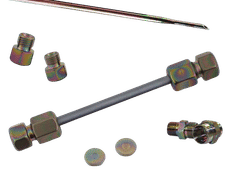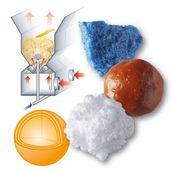EU Directive on Emissions in Paints and Coatings Strongly Influences the Course of Rheology
Manufacturers Must Produce Environmentally Safe Products to Succeed in the Market
Advertisement
The European market for rheology modifiers in paints is gaining momentum with the gradual recovery of the European economy that began in late 2003 and continued through 2004, ending three years of economic stagnation that preceded.
Many rheology modifier manufacturers experienced moderate growth in 2004 and expect this encouraging trend to continue for the next few years. This growth was largely due to the reasonably good performance of certain key paints and coatings segments such as architectural and water-borne industrial coatings, which account for a bulk of the demand for rheology modifiers.
However, the recent European Union (EU) directive on volatile organic compounds (VOCs) could become an obstacle for these manufacturers. The EU introduced this directive (2004/42/CE) with the specific aim of reducing emissions of VOCs resulting from the use of organic solvents in certain paints, varnishes and vehicle refinishing products.
Following this legislation, coating companies are more or less compelled to reduce solvent emissions by improving efficiency in using them or by substituting products that contain less or no solvent.
"This has increased the market for water-borne, high solids and solvent-free paints and affected the demand for solvent-borne paints in all sectors," notes Frost & Sullivan Research Analyst Vinayak Rao. "The growth in water-borne paints acts as a driver for rheology modifier types such as cellulosics and synthetics, which are widely used in water-borne formulations."
Currently, paint formulations vary across Europe and there are strict regulations regarding the presence of substances that pose potential hazards to the environment. However, some existing rheology modifiers still contain toxic substances.
In such a scenario, the message for rheology modifier manufacturers is clear: produce environmentally compliant products or risk being left out of the race. Faced with this challenge, these manufacturers are attempting to modify existing products or produce new ones that have less solvent content or are solvent-free; or contain low or zero VOCs and hazardous air pollutants (HAPs). They are also looking at developing products that are free of APEOs, crystalline silica and heavy metals to suit different paint formulations in various regions.
Adding to this challenge is the increasing pressure to produce innovative products for new coatings formulations. Customers are placing greater emphasis on high-quality products, compelling rheology modifier manufacturers to introduce novel technologies that address this need.
Developing customised solutions and retaining a sharp focus on customer needs are likely to help them achieve this need and stay competitive in the market.
As part of this competitive strategy, additive companies need to provide enhanced technical support and service to customers that are increasingly preoccupied with fundamental aspects of their business such as logistics, marketing and distribution. With customers now viewing additive suppliers as complete solutions providers, they need to position themselves accordingly.
"In an environment marked by new product development or modification of existing ones, a superior level of technical support is critical and a key competitive factor for companies seeking success," says Mr. Rao.
Despite these challenges, opportunities arising from the enlarged EU will be significant. This is primarily due to the boom in construction activity - itself a result of the recovering economy - in some recently included eastern European countries such as Latvia, Lithuania and Estonia. Building renovation work has also simultaneously expanded in western Europe.
In 2004, the economy of the expanded EU improved by around 2.3 per cent while total construction activity in central and eastern Europe rose by 7.4 per cent, a substantial improvement over the negative figures of 2002. These trends are bound to drive increased demand for paints and coatings and consequently, for rheology modifiers.
If you are interested in a research overview, which provides manufacturers, end-users and other industry participants with a synopsis of the latest analysis of the European Markets for Rheology Modifiers in Paints (B470-39) - then send an e-mail to Katja Feick, Corporate Communications using the Contact button below.
Other news from the department business & finance
These products might interest you
Most read news
More news from our other portals
See the theme worlds for related content
Topic world Rheology
Rheology deals with the flow behavior and deformation properties of materials. In the chemical field, it is indispensable for understanding the consistency, viscosity and elasticity of liquids, gels and solids. Whether formulating paints, producing polymers or optimizing food textures, rheological properties influence how substances react, move and feel.

Topic world Rheology
Rheology deals with the flow behavior and deformation properties of materials. In the chemical field, it is indispensable for understanding the consistency, viscosity and elasticity of liquids, gels and solids. Whether formulating paints, producing polymers or optimizing food textures, rheological properties influence how substances react, move and feel.


































































